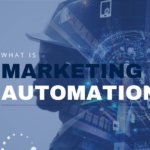Artificial Intelligence (AI) continues to revolutionize marketing, introducing new trends and reshaping strategies across industries. The value of the AI industry is expected to grow more than 13-fold in the next seven years.
As of 2024, several key AI marketing trends are set to lead the way, such as chatbots, predictive analytics, and more, offering substantial advantages to businesses seeking to innovate and connect with consumers more effectively. These trends not only reflect advancements in technology but also respond to evolving consumer behaviors and expectations, making them essential considerations for marketers navigating the digital frontier.
Embracing these AI-driven innovations promises to unlock opportunities for personalized engagement, enhanced customer experiences, and optimized marketing efforts in the year ahead. Let’s explore top 5 AI marketing trends for 2024 in this post.
1. Advanced Ad Targeting
Advanced ad targeting has revolutionized the way businesses reach their audiences. Leveraging the latest technologies, particularly AI, you can now deliver ads with precision. This evolution has dramatically improved the efficacy of advertising campaigns, maximizing Return On Investment (ROI) and enhancing user experience.
- AI Takes Ad Targeting to a New Level
AI has taken ad targeting to a new level by analyzing vast amounts of audience data. This data includes demographic information, browsing behavior, purchase history, and social media activity. AI algorithms process this information to identify patterns and predict future behavior, enabling you to target individuals with tailored ads that are more likely to resonate with your brand.
- Improved Ad Performance Standards
Precise targeting through AI leads to improved ad performance standards. By reaching the right audience with the right message at the right time, ads become more relevant and engaging. This relevance increases the likelihood of user interaction, whether it’s clicking on an ad, making a purchase, or signing up for a service. Consequently, you see higher conversion rates and better overall campaign performance.
- Action Steps for Refining Targeting Strategies
To fully use the power of advanced ad targeting, you should:
- Monitor Ad Performance Closely: Regularly review ad metrics such as Click-through Rates (CTR), conversion rates, and Return On Ad Spend (ROAS). This ongoing analysis helps in identifying what works and what doesn’t.
- A/B Test Ad Variants: Implement A/B testing to compare different versions of ads. This testing allows you to understand which elements (e.g., headlines, images, calls-to-action) perform best, leading to more effective targeting.
- Refine Targeting Strategies: Use insights gained from monitoring and testing to continually refine targeting strategies. Adjust audience segments, ad placements, and messaging to ensure that ads remain relevant and effective.
2. Enhanced Marketing Automation
Enhanced marketing automation is reshaping the landscape of digital marketing. AI advancements are at the forefront of this transformation, making marketing processes more efficient and enabling businesses to respond swiftly to changes in the market while delivering hyper-personalized experiences to their audience.
- AI Advances Make Marketing Automation More Efficient
AI-driven marketing automation significantly boosts efficiency by streamlining tasks that would otherwise be time-consuming. These advances allow for quick changes in strategy based on real-time data, ensuring that marketing efforts remain relevant and effective. AI’s ability to process and analyze vast datasets means that marketing campaigns can be optimized on the fly, leading to better engagement and higher conversion rates.
- Applications of Enhanced Marketing Automation
The applications of enhanced marketing automation are vast and varied, including:
- Automated Social Media Posts: AI tools can schedule and publish social media posts at optimal times for maximum engagement. These tools also analyze performance data to suggest improvements and adjust posting schedules accordingly.
- Email Campaigns: AI can automate the creation and distribution of email campaigns, segmenting audiences based on behavior and preferences to send highly personalized content. This increases open rates, click-through rates, and overall campaign effectiveness.
- Programmatic Ads: AI algorithms power programmatic advertising, automatically buying and placing ads across various platforms to reach the right audience. These ads are continuously optimized based on performance data, ensuring the best possible ROI.
- Action Steps for Leveraging Enhanced Marketing Automation
To make the most of enhanced marketing automation, you should:
- Use AI Tools for Automation: Implement AI-powered tools to automate repetitive marketing tasks such as scheduling posts, sending emails, and managing ad campaigns. This frees up time for you to focus on strategic planning and creative development.
- Focus on Creative Strategy: With the operational aspects of marketing taken care of by AI, you can dedicate more resources to developing innovative and engaging content. Creative strategy becomes the key differentiator in attracting and retaining customers.
- Continuously Monitor and Optimize: Regularly review the performance of automated marketing activities and make data-driven adjustments. Use insights from AI analytics to refine strategies and improve outcomes continuously.
3. Evolution of Chatbots
The evolution of chatbots has been marked by significant advancements in AI, particularly in Natural Language Processing (NLP). Chatbots are used by 52% of telecommunications organizations to enhance their overall productivity.
AI-driven chatbots are now more advanced than ever, capable of handling complex customer interactions and providing valuable support across various platforms.
- AI-Driven Chatbots Can Handle Complex Customer Interactions
AI-driven chatbots have progressed from simple, scripted responses to dynamic, context-aware interactions. These chatbots can understand and respond to nuanced customer inquiries, providing accurate and helpful information. They can manage tasks such as troubleshooting technical issues, processing transactions, and offering personalized product recommendations, all while maintaining a natural conversational flow.
- Increased Adoption of Chatbots with Advanced NLP Capabilities
The adoption of chatbots equipped with advanced NLP capabilities is on the rise. NLP allows chatbots to understand and interpret human language more effectively, including idiomatic expressions, slang, and context. This enhances the user experience by making interactions more intuitive and human-like. Businesses across various industries are integrating these chatbots into their customer service strategies to improve efficiency and customer satisfaction.
- Action Steps for Implementing and Optimizing Chatbots
To effectively implement and optimize chatbots, you should:
- Develop a Chatbot Strategy: Define clear objectives for what the chatbot should achieve, such as improving customer service, increasing sales, or streamlining operations. Identify key interaction points where a chatbot can add value and plan its integration accordingly.
- Monitor Interactions: Regularly monitor chatbot interactions to ensure they meet the desired standards of performance and customer satisfaction. Analyze interaction data to identify common issues, customer preferences, and areas for improvement.
- Continuously Update the Knowledge Base: Keep the chatbot’s knowledge base up to date with the latest information about products, services, and company policies. Regular updates ensure the chatbot can provide accurate and relevant responses. Additionally, use feedback from customer interactions to refine the chatbot’s responses and capabilities.
4. Predictive Analytics in Marketing
Predictive analytics in marketing uses the power of AI to anticipate future market trends, customer behaviors, and product performance. This forward-looking approach enables businesses to make data-driven decisions that enhance marketing strategies, improve customer engagement, and drive growth.
- AI Uses Predictive Analytics to Forecast Trends
AI-driven predictive analytics processes vast amounts of data to uncover patterns and trends. By analyzing historical data and identifying correlations, AI can forecast market dynamics, anticipate customer needs, and predict how products will perform. This allows marketers to proactively adjust their strategies, optimize their campaigns, and better allocate resources to maximize ROI.
- Importance of Comprehensive Customer Data for Accurate Predictions
Accurate predictive analytics relies heavily on the quality and comprehensiveness of the data collected. To make precise predictions, it is crucial to gather detailed and diverse customer data, including demographic information, purchase history, online behavior, and social media interactions. The richer the data, the more reliable and actionable the insights generated by predictive analytics.
- Action Steps for Leveraging Predictive Analytics
To effectively implement predictive analytics in marketing, you should:
- Invest in Data Collection Tools: Use advanced tools and technologies to collect comprehensive customer data. This includes using Customer Relationship Management (CRM) systems, social media analytics, web analytics, and other data sources to build a robust data repository.
- Adopt Predictive Analytics Tools: Implement predictive analytics tools that can process and analyze the collected data to generate actionable insights. These tools should be capable of handling large datasets and employing sophisticated algorithms to make accurate predictions.
5. Voice Search Optimization
Did you know there are more than 4 billion voice assistants currently in use?
With the growing prevalence of voice-activated devices and the rise in voice search, optimizing content for natural language queries has become essential for businesses aiming to maintain and expand their online presence. Voice search optimization focuses on tailoring content to meet the unique needs of voice search users, thereby capturing new marketing opportunities.
- Rise in Voice Search and Voice-Activated Shopping
Voice search has seen a significant increase, driven by the widespread adoption of smart speakers, virtual assistants, and mobile devices equipped with voice recognition capabilities. Users are increasingly turning to voice search for convenience and speed, asking questions and making commands in a natural, conversational manner. This trend extends to voice-activated shopping, where consumers use voice commands to search for products, compare prices, and make purchases.
- Voice Search Integration in Various Devices
The integration of voice search capabilities across a wide array of devices—smartphones, smart speakers, home assistants, and even automobiles—has opened up new avenues for marketers. This integration enhances user experience by providing hands-free, immediate access to information and services. As a result, businesses that optimize for voice search can reach a broader audience, engage users in more meaningful ways, and drive higher conversion rates.
- Action Steps for Voice Search Optimization
To effectively optimize content for voice search, you should:
- Optimize Content for Long-Tail Keywords: Voice search queries tend to be longer and more specific than text-based searches. Incorporate long-tail keywords that reflect how people naturally speak.
- Use Conversational Language: Ensure that your content mimics natural speech patterns. Write in a conversational tone that aligns with how users would ask questions and make requests verbally. This includes incorporating question phrases and complete sentences.
- Enhance Local SEO: Many voice searches are location-specific, such as “Find a nearby coffee shop.” Optimize your content for local SEO by including location-based keywords and ensuring your business information is up to date on Google My Business and other local directories.
- Create FAQ Pages: Develop FAQ pages that address common questions your audience might ask. Structure these pages to provide clear and concise answers, increasing the chances of your content being featured in voice search results.
- Focus on Mobile Optimization: Since a significant portion of voice searches are conducted on mobile devices, ensure your website is mobile-friendly. This includes fast loading times, responsive design, and easy navigation.
Conclusion
Staying informed and adapting to AI marketing trends is crucial for maintaining a competitive edge in today’s rapidly evolving digital landscape. The integration of AI in various aspects of marketing—from advanced ad targeting and enhanced automation to chatbots, predictive analytics, and voice search optimization—offers businesses unparalleled opportunities to connect with their audience, improve efficiency, and drive growth.
Struggling to keep up with the ever-changing marketing landscape? Maino.ai can help. Their cutting-edge AI solutions leverage machine learning and data analytics to unlock powerful insights. This empowers businesses to understand customer behavior, predict market trends, and develop personalized marketing strategies that drive real growth.













